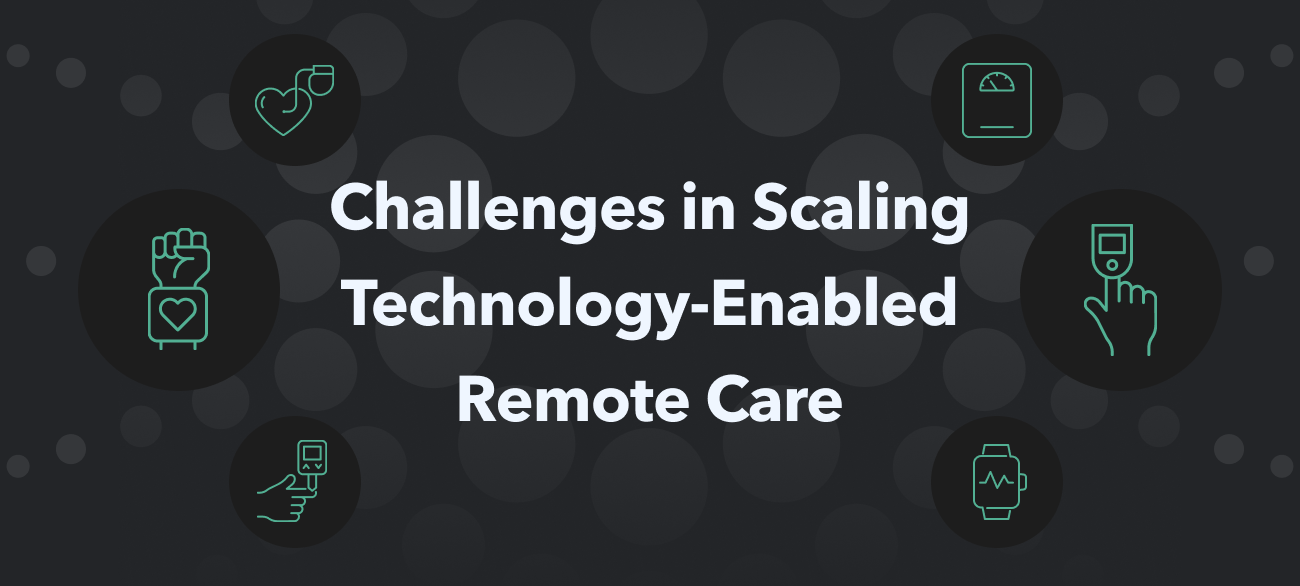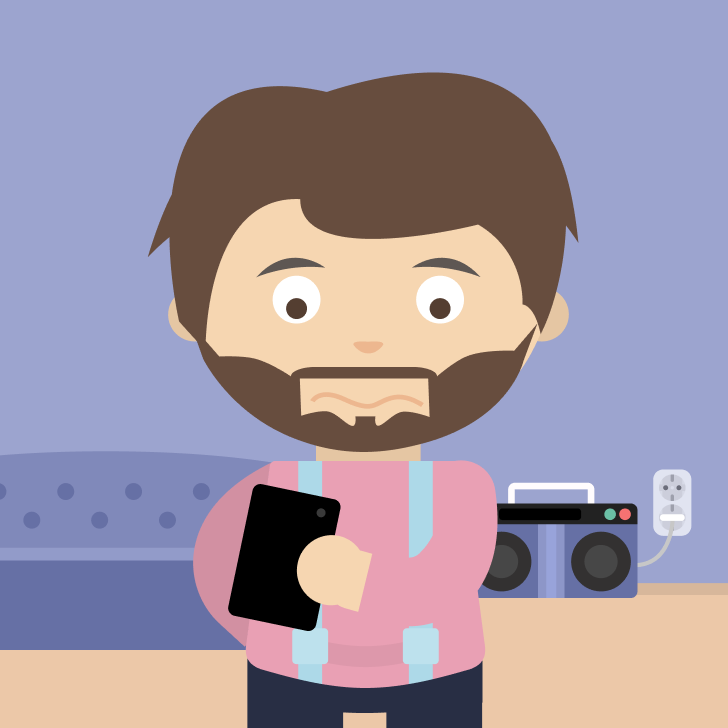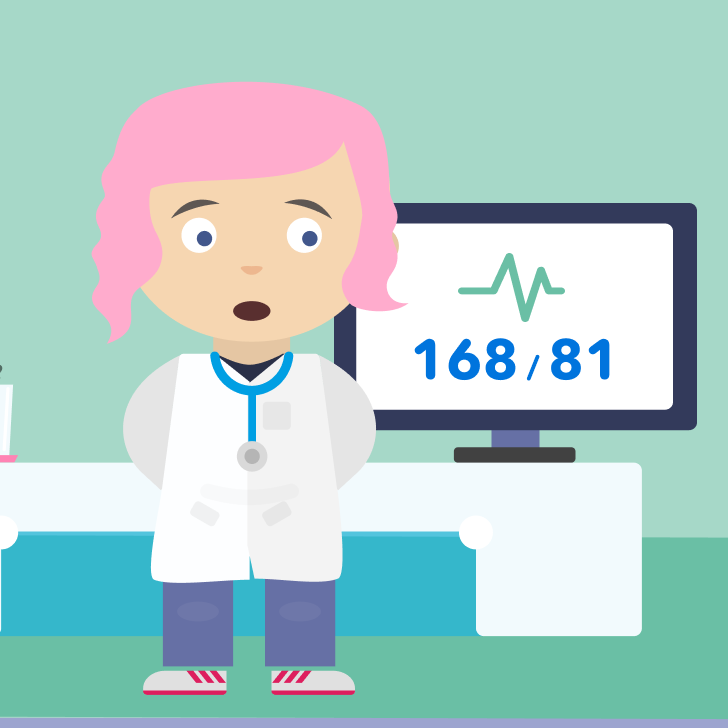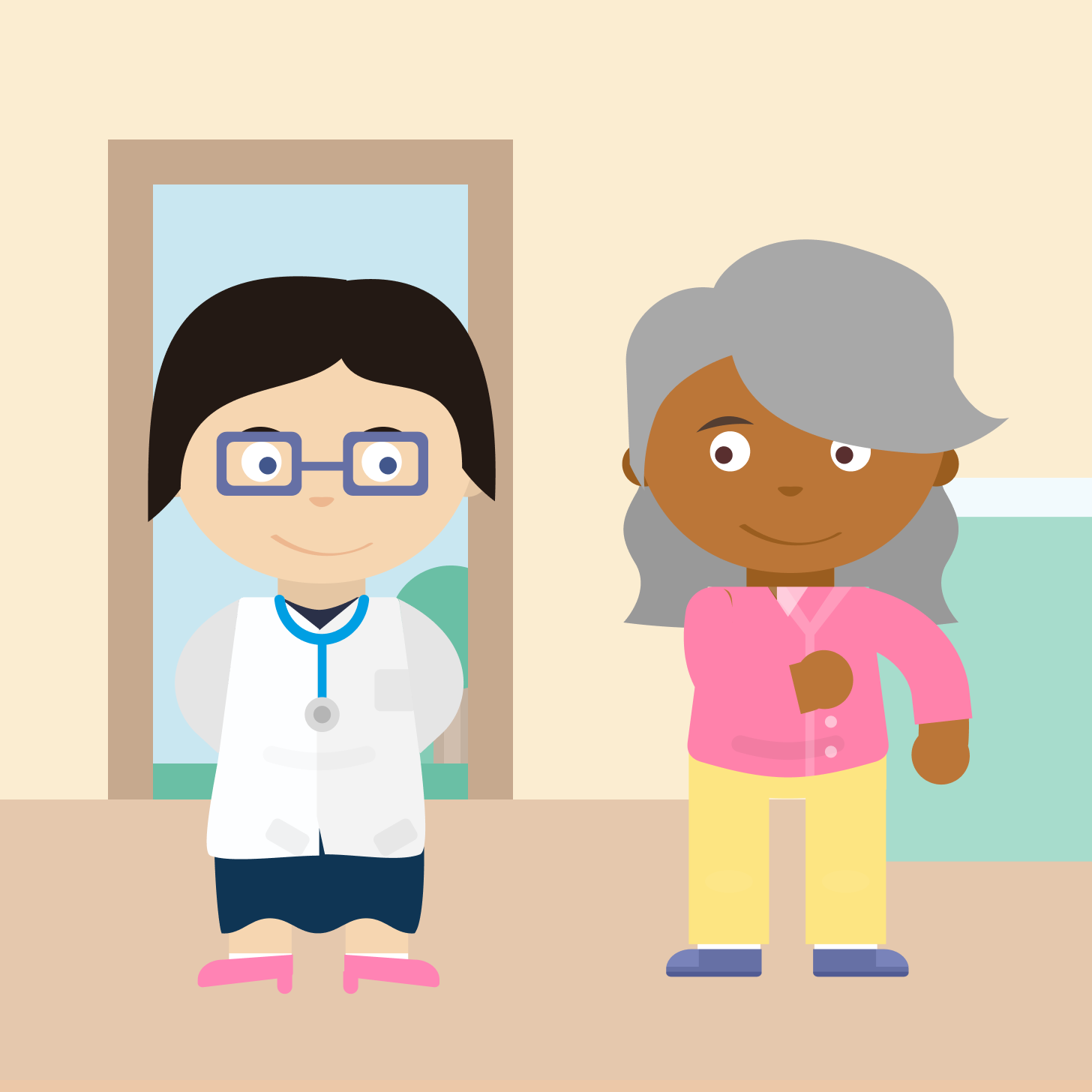
Top 5 challenges in scaling technology-enabled remote care
Breid O'Brien - Digital Transformation Consultant
Implementing technologies like Luscii to support virtual care models can enable ICBs to transform patient care, using advanced remote monitoring technologies for managing long-term conditions and supporting the delivery of virtual wards. However, starting a digital transformation journey also brings challenges. That’s what we’re here to discuss. In this blog, Breid O’Brien, Digital Transformation Consultant, reflects on the biggest transformation challenges facing technology-enabled home care and what they may mean for the NHS.

What outcomes are we trying to achieve?
First, I think we should start by highlighting the outcomes we’re collectively trying to achieve. For me, the most important outcome is enabling people to manage their health or illness and ensuring they can live their best lives. We must also support staff to have more joy at work through utilising technology that enables them to work more efficiently to help patients, rather than adding to their burden.
All of this must be supported by a mindset change — moving from our traditional paternalistic model of care to a real partnership between clinical teams and patients. Even the use of the word patient implies this is all about illness, but I think our real focus should be on optimising people’s health! I’m very excited about how this approach could help change the NHS from what I sometimes feel has become a national illness service, to a true national health service. To achieve this at scale, we need to change many things, but I’m limiting myself to what I think are the top five hurdles to overcome.
This is a high-level view of these challenges; however, Luscii colleagues will add their expert and in-depth views based on their extensive experience in this area. So, watch this space for other posts in this series. The order of these five doesn’t indicate any priority, although we should always start with people, as that’s what makes the world go round...
1. Patient Experience
Recently joining the Board of a major Charity has made me reflect more deeply on how we view health as a concept. For many in acute care, I think this is a narrow perspective based on individual transactions or episodes, which influences how we measure benefits. This is not a negative comment on the fabulous clinical teams delivering great care every day – it’s simply a reflection of traditional models of care delivery.
With the offer of virtual care that the public see, I think the focus on saving bed days is misleading in terms of how we explain the benefit of technology-enabled home care. Creating acute capacity is really important, but I believe we need a different narrative to explain the offer to the public. This narrative should talk about virtual care being the best way to deliver optimal care, rather than just a way to save bed days. The current narrative could be interpreted as “it’s a necessity because we don’t have enough beds” (not untrue regarding bed capacity), but for me, it’s more about “it’s the right thing to do to avoid the negative effects of hospitalisation and to promote recovery”.
This is about enabling people to stay healthy and prevent illness or acute exacerbations of existing conditions, in the knowledge that they are being looked after by clinical teams with the support of technology. It’s also about avoiding being in a hospital bed unless absolutely necessary, and instead, promoting recovery in the place they call home.

"We need to not shy away from saying that technology enabled home care can be the gold standard if it’s personalised to individual patients."
We must also acknowledge that virtual care is not a suitable option for everyone at this point. The decision as to which patients it’s suitable for is between the individual patient and the clinician. Patients who have been recipients of this model of care, and introduced to the model in this way, are overwhelmingly supportive, with satisfaction rates usually above 95%. So, for me, I’d like to see more focus on how we communicate the offer to the public, through the human stories that demonstrate the benefits for people.
Currently, we see some narrative on the negative effects of being in hospital as there is evidence to support this, e.g. deconditioning and hospital-acquired infections. I’d love to see some work on how we evidence the benefits of being at home rather than in hospital, so we can flip from the negative to the positive. Some of these benefits won’t easily be monetised, but I believe will have a significant longer-term economic value (I’m not sure we yet know how to quantify this so do get in touch with any ideas!).
2. Staff Experience
I hear the term “clinical buy-in” so often (and I sometime use it too) — but it’s a poor representation of what I believe we should be speaking about. Having to get “buy-in” to something immediately tells me that it’s not been co-designed with the people who are going to deliver the service. Also, “staff engagement” doesn’t really work for me — having to get “engagement” implies the same problem. At all levels, remote care should be about partnerships, a belief in doing what is right for our patients and enabling our local NHS teams to deliver optimal care safely. While involving people is essential, it must also be in a meaningful way. Remote care services need to be co-designed with the people delivering them and the people receiving care this way.
The national virtual ward initiative has been amazing at driving change (and I led the national team responsible for the initial technology enablement of this initiative so I’m fully supportive!), but we now need to move away from thinking of virtual care as a centrally imposed initiative with protected funding, to local teams believing this is the way to optimal care. It needs to become part of a sustainable plan that’s designed, delivered, and funded at a local level. For me, this is probably best at the ICB level, but I recognise that place level may be more manageable for some teams.

Having spoken to many of the clinical teams delivering virtual care, I can see that staff satisfaction is high, but there are still concerns about safety, accountability, digital inclusion, interoperability, etc. We collectively need to be upfront and honest that we haven’t solved everything but, using an improvement approach, we have sufficient evidence that this is adding real benefits, and that we can continue to test and iterate delivery models to overcome all these concerns.
In addition, the staffing models needed cannot be in addition to existing day jobs – they require dedicated, and appropriately skilled, teams with the ability to fully exploit what technology can offer. We need clinical teams to be asking “why can’t we do this?” i.e. more from push to pull, so they need to be encouraged to lead this work from the outset, and I’m delighted to see some amazing clinical leaders emerging across the country who are doing just this.
We also need to ensure the technology isn’t adding additional burden for busy clinical teams. We must deliver a targeted focus on interoperability to reduce duplication of effort and enhance safety, alongside creating a focus on an intuitive user interface. This aligns with the current discussions on productivity; we must ensure our valuable workforce works with technology that makes their jobs easier rather than harder.
3. Health equity
This is a real concern for many people, though for me, this is a positive as it shows the importance of getting it right! We must ensure anything we do doesn’t have a negative impact on health equity. At a session with clinical teams recently, questions ariund access to devices, data poverty, etc. were front and centre, due to concerns about remote care becoming a service only for those who are digitally savvy and can afford devices/data, leaving others behind. I was delighted this was an upfront concern, i.e. teams want an optimal model of care for patients and don’t want to leave anybody behind.

We know that in 2022, around 6% of households in the UK did not have access to the internet at home. We also know that around one million people cancelled their broadband package in the last 12 months due to rising costs, and around 10 million adults are estimated to lack foundation-level digital skills.
Tackling digital exclusion is a wider societal challenge that the NHS must be a partner in addressing. The approach needs to support those who want to get online, provide less confident users with essential digital skills, and ensure that those who remain offline are not left behind. Again, there are some great examples of partnerships between NHS organisations, local authorities, and the charity and private sector working together to address some of these challenges. The NHSE framework for NHS action on digital inclusion provides some useful insights on this.
4. Evidence
As an improver at heart, I’m confident we have enough data to support the case for remote care, at the level of what I term “evidence for improvement”. For me, this says there is evolving evidence of the benefit of this model of care, but we need to keep testing and iterating (using improvement science techniques) to get this to work optimally.
As technology evolves, we need to exploit new opportunities, and as staff and patient confidence and expectations grow, technology companies need to be able to respond to this. This comes back to my point about partnerships that grow together and are responsive to changes around us. We all need a north star to aim for, but we need to do that in a way that creates enough flexibility to maximise the benefits of the fast-changing technology world.
So, we need to continue to build the evidence base at every opportunity. This may be in the form of rapid evaluation programmes such as Decide, or the great work done by the Health Innovation Networks and others. We also need some longer term, deeper evaluations and work is already underway to support this, so I’d encourage people to get involved in these opportunities when they are publicised. I’m also delighted to see the recent work by NICE on technology-enabled ARI virtual wards, plus the ongoing programme they’re pursuing to assess the technology components of these care models.
A dependency for evidence generation is access to data so again work on data sets to enable comparisons between different models of care, different technologies etc is key. Another NHS legacy is we tend to measure what we can, rather than what matters. As we’re still in the early stages of this virtual care evolution, determining what fits into the “what matters category” is a real opportunity. This will of course need to include capacity and utilisation, but we also need data sets that enable us to measure some of the greater value areas, such as patient outcomes, quality of life, recovery times, patient activation with their own care, etc. We need to start to consider how to measure these important variables and what data we need to collect for this. Again, I’d welcome any thoughts people have on this.
5. Funding
As I mentioned at the beginning, we’re now at a juncture where we need to move from centrally funded initiatives, which are often seen as top-down directives, to local systems determining that technology-enabled remote care is important enough to prioritise and fund locally and sustainably. I believe we still need central support on some factors, such as the agreement of national data sets needed to determine sustainable funding, whether through activity-based payments or outcome-based payments. I believe we need to move from a model of care requiring upfront investment, to being a service that can be properly commissioned and funded on an ongoing basis. Additionally, we must move away from technology funding being raided when a funding crisis happens elsewhere in the system.
-1.png?width=400&height=400&name=Many%20pounds%20saved%20by%20digital%20transformation%20(2)-1.png)
If we truly believe technology is one of the ways we enable the NHS to perform better, we must stick to funding commitments for the longer term as technology-enabled change requires a long-term commitment.
Essentially, we need multiyear funding approaches so we can build teams, commit to technology spend, and, most importantly, convince our patients this isn’t just another NHS fad, but a genuine change to how we can best care for them, and one we will continue to build on. We also need to explore opportunities to work with local authorities and the Voluntary Community and Social Enterprise (VCSE) sector as to how they can support local systems in the delivery of these new models of healthcare. This is all about robust and trusted partnerships at every level.
In summary, I know there are many more challenges to overcome and opportunities to exploit. This includes the role of technology suppliers to make the transition to new technology-enabled models of care easier, which I’m sure you'll hear more about from Luscii. That said, I feel optimistic as I can see the tide has turned, and I now regularly see and hear clinical teams asking themselves, and others, “How can we use technology to enable home care better and more safely?”. I feel the narrative has moved on from “Should we do it?”, to "How do we do it?".
Breid is currently an independent healthcare consultant and has previously held national and system-level roles, including National Director of Digital Health and Innovation at NHS England, and the Director of Digital Transformation at the Health Innovation Network in South London. She has an extensive healthcare background spanning the NHS, the UK private sector, and the Australian healthcare system. With a background as a Registered Nurse specialising in Emergency care, she has since held senior operational management roles in acute healthcare organisations, before moving to system and national-level roles relating to large-scale change and improvement enabled by technology.
Want to hear more about Luscii?
Luscii is the system-wide platform for health care at home. Our mission is to create space for care, giving clinicians back time to focus on the patients who need it most. With over 100 at-home care programs, Luscii's innovative remote monitoring pathways equip healthcare providers with the tools to oversee patients from afar, providing effective management of long-term conditions to improve hospital outcomes with reduced admissions, faster discharge, and improved quality of care.

